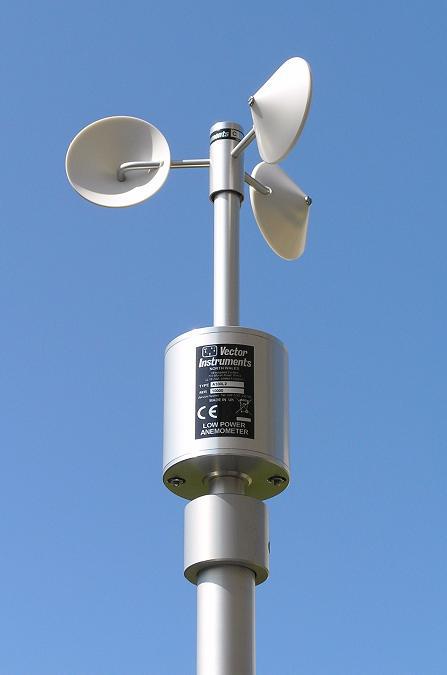Top Features to Try To Find in a Reliable Anemometer for Accurate Wind Dimension
Discovering the Features and Advantages of Anemometers for Climate Fanatics and Specialists
Anemometers stand as crucial devices in the world of weather condition monitoring, accommodating both fanatics and skilled professionals alike. These tools provide a window into the vibrant world of wind patterns and rates, supplying invaluable information for meteorological evaluation and forecasting. From cup anemometers to sonic anemometers, each kind brings its special collection of advantages and applications, dropping light on numerous aspects of weather. As we look into the functions and advantages of anemometers, a much deeper understanding emerges not just of prevailing weather sensations however likewise of the more comprehensive ramifications for sectors like wind power production and environmental research study.
Significance of Anemometers in Weather Monitoring
Anemometers play an essential function in weather monitoring by giving precise dimensions of wind speed, aiding in forecasting and understanding weather condition patterns. These tools, varying from traditional cup anemometers to modern ultrasonic anemometers, are necessary for meteorologists, scientists, and climate fanatics alike.

Kinds of Anemometers and Their Applications
The most typical types of anemometers consist of mug anemometers, vane anemometers, hot-wire anemometers, and ultrasonic anemometers. Cup anemometers consist of 3 or four mugs placed on horizontal arms that revolve with the wind, determining its rate. Vane anemometers, on the other hand, utilize an easily revolving vane to straighten with the wind instructions, supplying both wind speed and instructions dimensions.
Mug anemometers are appropriate and durable for basic weather tracking, while vane anemometers are favored for directional measurements. Ultrasonic anemometers are non-intrusive and provide high accuracy, frequently utilized in study and specialized weather condition surveillance applications.
Benefits of Utilizing Anemometers in Projecting
In weather forecasting, the utilization of anemometers offers very useful advantages for improving the precision of climate forecasting. Anemometers gauge wind speed and direction, giving vital information for predicting climate patterns. By including wind information right into projecting models, meteorologists can much better understand the activity of climate systems, prepare for modifications in climatic conditions, and concern more precise projections.
Moreover, anemometers play a vital role in assessing potential weather condition risks. Keeping track of wind speeds assists forecasters forecast severe climate events such as hurricanes, twisters, and winter months tornados with better precision. This early warning system makes it possible for authorities to release timely notifies and carry out required safety and read here security measures, reducing the dangers to life and property.
Additionally, anemometers help in enhancing eco-friendly power production. By evaluating wind patterns, meteorologists can identify appropriate locations for wind farms and forecast energy outcome, adding to the efficient generation of wind power.

Anemometers in Wind Energy Production
Provided the critical role anemometers play in giving precise wind information for weather forecasting and risk evaluation, their value reaches the world of wind power manufacturing. Anemometers are important instruments in the area of wind power, where the dimension of wind rate and direction is critical for figuring out the feasibility and efficiency of wind generator setups. By accurately measuring wind speeds at differing elevations, anemometers help enhance the placement and design of wind turbines to make the most of energy outcome.
In wind farms, anemometers are strategically put to accumulate real-time wind data that is used to analyze the potential power manufacturing of a website. This information is crucial in establishing the financial stability of wind power tasks and in forecasting energy generation to make sure grid stability. Additionally, anemometers aid in keeping track of wind conditions to optimize generator efficiency, protect against damages from high winds, and make sure the security of personnel operating in the location of wind turbines.
Enhancing Climate Understanding With Anemometers

Anemometers play a key role in enhancing our understanding of microclimates. These local weather can differ dramatically from more comprehensive local forecasts, making it important to have precise data for specific locations. anemometer. By purposefully putting anemometers in different areas, scientists can collect in-depth info on how wind acts in various surfaces, metropolitan environments, or bodies of water
Moreover, anemometers add to enhancing weather projecting models by giving real-time data on wind habits. This information is specifically useful for anticipating severe climate occasions, optimizing farming methods, and supporting markets like air travel and maritime navigating. On the whole, anemometers are very useful Discover More tools that enable us to dive deeper right into the complexities of climate systems, eventually resulting in more accurate forecasts and better-informed decisions.
Conclusion
In verdict, anemometers play a crucial function in weather surveillance and forecasting by determining wind speed Source and instructions. They are essential devices used by weather fanatics and experts to gather accurate data for predicting weather patterns and analyzing possible effects. Anemometers also have applications in wind power manufacturing, further highlighting their relevance in both meteorology and renewable resource markets. Generally, anemometers add to improving our understanding of weather sensations and boosting forecasting abilities. anemometer.
From cup anemometers to sonic anemometers, each kind brings its special collection of benefits and applications, dropping light on various facets of atmospheric problems. These tools, varying from standard cup anemometers to contemporary ultrasonic anemometers, are essential for meteorologists, researchers, and weather enthusiasts alike. The most common kinds of anemometers consist of mug anemometers, vane anemometers, hot-wire anemometers, and ultrasonic anemometers. Mug anemometers are robust and appropriate for basic climate surveillance, while vane anemometers are preferred for directional dimensions. Anemometers are crucial instruments in the area of wind power, where the dimension of wind rate and instructions is critical for establishing the expediency and efficiency of wind turbine setups.